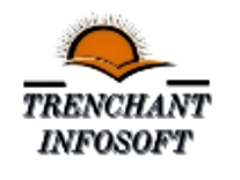
TDS (Tax Deducted at Source) integration refers to the process of integrating your financial and accounting systems with the government’s TDS system. TDS is a tax collection mechanism where a certain percentage of payment is deducted by the payer at the time of making specified payments to the payee. Integrating your systems with the TDS system helps ensure accurate deduction, reporting, and compliance with tax regulations. Here’s an overview of TDS integration:
Key Aspects of TDS Integration:
- Automated Deduction: Integrated systems can automatically calculate and deduct the appropriate TDS amount from payments subject to TDS. This eliminates manual calculations and reduces errors.
- Real-Time Data Exchange: Integrated systems can facilitate real-time data exchange between your business systems and the TDS portal, ensuring accurate and timely submission of TDS details.
- TDS Certificate Generation: Integrated systems can automatically generate TDS certificates for deductees, providing them with a record of the TDS deducted.
- Quarterly TDS Returns: Integrated systems can assist in preparing and filing quarterly TDS returns with the tax authorities. This includes Form 24Q (Salary), Form 26Q (Non-Salary), and others, as applicable.
- Challan Generation: Integrated systems can generate online challans for depositing the TDS amount with the tax authorities.
- Challan Reconciliation: Reconciling challan details with the TDS portal’s data to ensure accurate credit of TDS payments.
- Data Validation: Integrated systems can perform validation checks on TDS data to ensure accuracy and compliance with regulatory requirements.
- Vendor Compliance: Integrated systems can help you ensure that vendors’ PAN (Permanent Account Number) details are valid and match with the TDS portal’s records.
Benefits of TDS Integration:
- Accuracy: Integration reduces manual errors in TDS calculations and ensures accurate reporting.
- Efficiency: Automated TDS calculations and submissions save time and effort in manual data entry.
- Compliance: Integration helps ensure compliance with TDS regulations and deadlines.
- Transparency: Integrated systems provide real-time visibility into TDS deductions and payments.
- Reduced Penalties: Accurate and timely TDS filings reduce the risk of penalties from tax authorities.
Integration Methods:
TDS integration can be achieved using APIs (Application Programming Interfaces) provided by the government’s TDS portal. These APIs allow your business systems to communicate directly with the TDS system, enabling seamless data exchange and submission.
When integrating TDS processes, it’s important to work with professionals who are experienced in integrating financial and tax systems. Adhering to technical specifications provided by the government and ensuring accurate data transfer are crucial for successful TDS integration.
